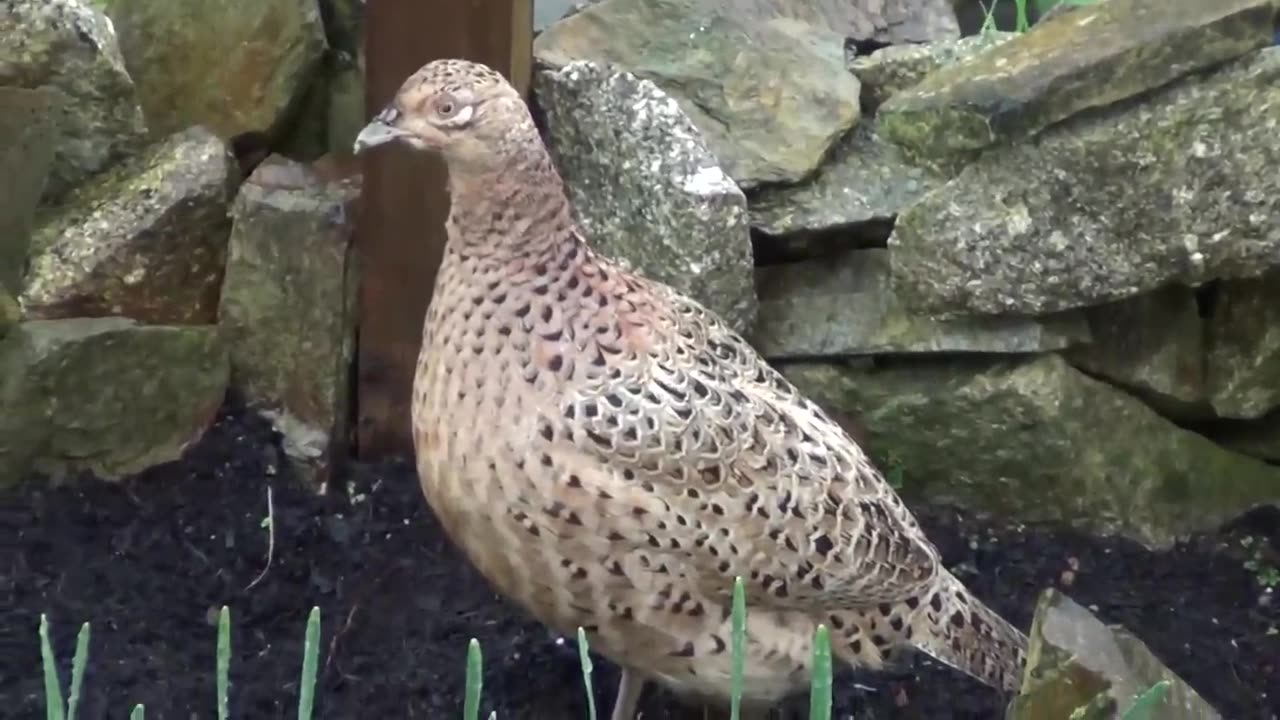Premium Only Content

Things you should know about PHEASANTS!
Things you should know about PHEASANTS!
#pheasant
#birdwatching
#nature
Have you ever wanted to know more about the common farmland bird, the Pheasant? Well if so, here is a video for you!
Ring necked pheasants are a large game bird that was introduced to the UK around the 11th century. They are native to China and east asia but have also been introduced to North America, mainland Europe, New Zealand and to some parts of Australia. Pheasants are sexually dimorphic, where the males and females look very different to one another. Females are mottled brown over their entire bodies and grow to between 750 to 1200 grams. Males are quite a bit larger at 1000 to 1750 grams and can be a variety of colours. The typical form is rich mottled chestnut and grey wings, with a glossy almost purple breast, a white neck band, green head and vibrant red patches of skin around each eye. Both males and females have very long tails which can make up more than half of their total body length.
Pheasants can roam into wetland and urban areas, sometimes even visiting gardens but their usual habitat is open countryside near to woodland edges and hedgerows. Their diet ranges from season to season but being opportunists they will eat everything from grains and seeds, to buds, roots and berries, insects and other invertebrates to lizards, snakes, frogs, and even small rodents.
Pheasants that survive over the winter months can and do nest in the UK. This happens between April and June when male pheasants, which are also known as cocks, compete with one another for the right to mate. The winners gather a harem of females which are known as hens and mate with all of them. The hens then create a well hidden nests on the ground, lined with grass and leaves. Each hen will lay between 6 and 15 olive or sometimes pale blue eggs in the nest. These measure around 4 and a half cm in length and it isn’t rare for more than one female to share a single nest creating a massive communal clutch. I cant find out if they share the incubation when they share a nest but only the hens incubate the developing eggs. They take 23 to 28 days to hatch and after just a few hours out of the egg, the chicks are up and about ready to move away from the nest. They can feed themselves straight away but they are flightless for the first 12 days. They will stay with their mother for 10 to 12 weeks before being fully independent. Pheasants will only nest once per year if they are successful at hatching their eggs, but if the eggs are destroyed, each hen can lay 2 or sometimes three clutches. As the male usually doesn’t play any part in rearing his chicks, he can have multiple mates throughout the nesting season.
As I mentioned in the beginning of this video, the vast majority of pheasants in the UK are captive bred ones that are released in the late summer for the shooting season. The breeding population here is between 3 and 4 million animals but each year between 45 and 50 million are released. To put this into perspective, if every native bird was weighed and compared with the weight of every pheasant in the UK in September, pheasants would outweigh natives 1.7times. Pheasants are able to fly short distances but when they sense danger they will usually run rather than take to the air. Pheasant can live to more than 18 years in captivity, but in the wild, they are lucky to make it to beyond 2 years of age. Here is a male pheasants call.
#pheasant #birdwatching #nature
-
 14:50
14:50
Russell Brand
15 hours agoJoe Rogan Goes Into SHOCK As Guest Exposes Government MIND CONTROL
82.7K97 -
 31:59
31:59
The Brett Cooper Show
12 days ago $16.27 earnedBernie Fights Oligarchy From His Private Jet & Prince Harry’s Biggest L Yet | Episode 30
66.4K33 -
 20:23
20:23
Exploring With Nug
19 hours ago $10.14 earnedI Found Something DISTURBING Thrown Off The Bridge!
227K13 -
 26:24
26:24
MYLUNCHBREAK CHANNEL PAGE
1 day agoMilitary Sites STOLE the Old World - Pt 1
176K80 -
 4:15:08
4:15:08
MissesMaam
11 hours agoRumblers Actin' Sus | Lockdown Protocol 💚✨
47.5K3 -
 4:09:19
4:09:19
GamerGril
13 hours ago☠ Doom Gal☠ | The Ages Aren't Dark Enough
91K18 -
 4:42
4:42
DecoyVoice
1 year agoPredictive AI is getting creepy
75.7K23 -
 4:16:28
4:16:28
SoundBoardLord
11 hours agoLockdown Protocol on a Sudbury Saturday Night!
42.8K6 -
 1:03:26
1:03:26
Tactical Advisor
17 hours agoUnboxing Tactical Gear/Hearing Protection Act | Vault Room LIve Stream 025
112K19 -
 5:00:00
5:00:00
Cripiechuccles
18 hours ago😁💚💙SHATTERDAY WITH CRIPIE💚💙RUMLUV ACTIVATE👌
37.6K4